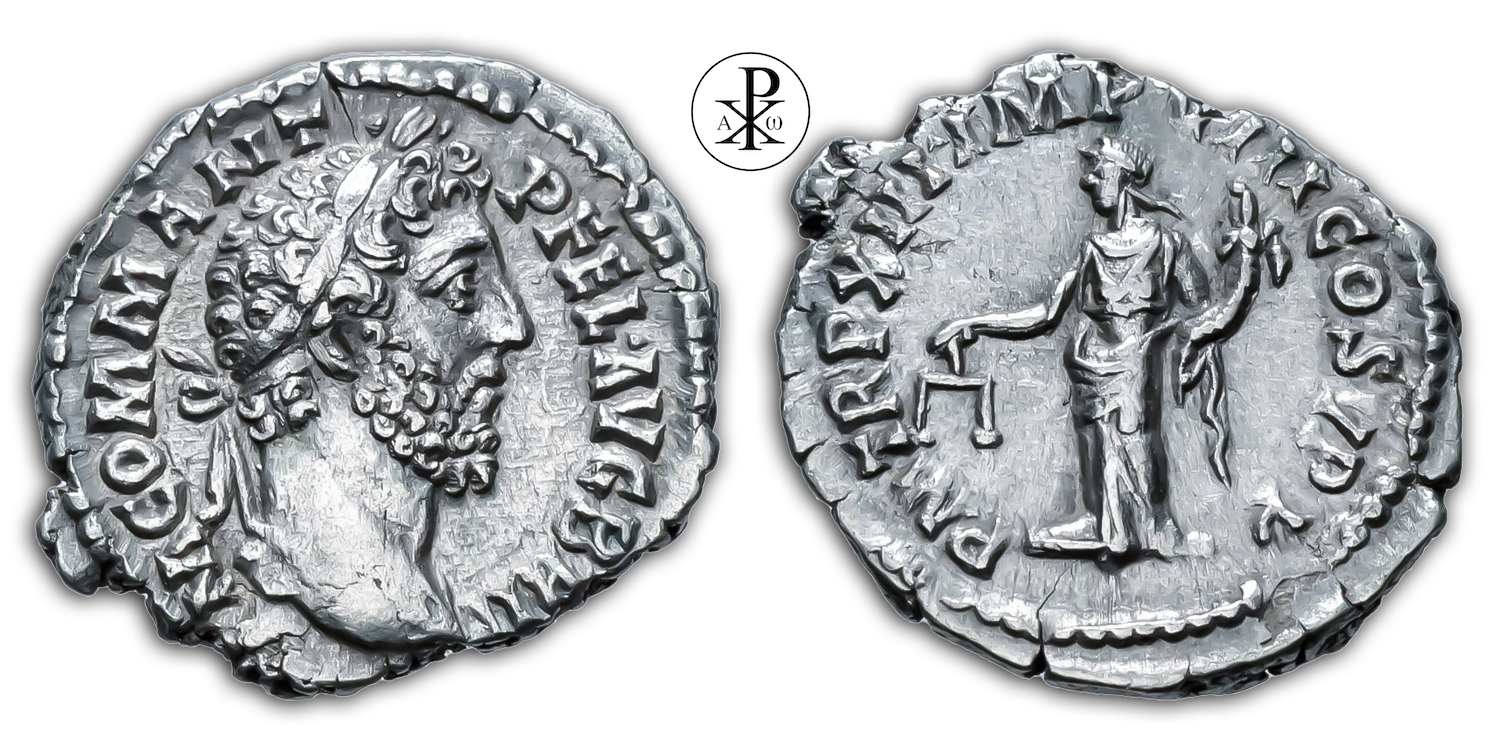Imperator Caesar Marcus Aurelius Commodus Antoninus Augustus
Reign: Commodus
Mint: Rome
Date: 187/188 AD
Nominal: Denarius
Material: Silver
Diameter: 18mm
Weight: 3.06g
Reference: RIC III Commodus 164
OCRE Online: http://numismatics.org/ocre/id/ric.3.com.164_denarius
Rare: R1
Provenance: CNG Classical Numismatic Group Lancaster, USA (Auction 534, Lot 600)
Pedigree: –
Obverse: Head of Commodus, laureate, right
Inscription: M COMM ANT P FEL AVG BRIT
Translation: Marcus Commodus Antoninus Pius Felix Augustus Britannicus
Translation: Marcus Commodus Antoninus, the pious, the fortunate, Augustus, conqueror of the Britons
Reverse: Aequitas, draped, standing left, holding scales in right hand and cornucopiae in left hand
Inscription: P M TR P XIII IMP VIII COS V P P
Translation: Pontifex Maximus, Tribunicia Potestate Tertia Decima, Imperator Octavum, Consul Quintum, Pater Patriae
Translation: High priest, holder of tribunician power for the 13th time, Imperator for the eighth time, consul for the fifth time, father of the nation
Comment: In ancient Rome, aequitas (Latin for equality, equanimity, composure) referred to balancing justice and equity, an important principle in Roman law. It was also depicted as the personification of a deity, as on coins of the Roman Republic. Aequitas did not represent a figure that sprang from the religious sphere, but was simply a concept that – like so many others – was accorded veneration. As a personal virtue, aequitas denotes equanimity, by virtue of which a Roman knows how to preserve dignity (dignitas) even in extremely critical or upsetting situations. In Roman legal thought in particular, aequitas referred to a concrete approach to justice. Even the derivation of the name from “aequus” for equal, fair, impartial or like suggests this meaning. Specifically, it was about the equality of legal decisions on the basis of similar previous cases (equality before the law was not meant). Thus, it can be said that aequitas also concealed the desire for a predictable interpretation of the law. However, in the time of the Roman emperors, “predictability” became more and more of a wishful thinking, especially when a capricious and despotic ruler was in power. As attributes, the serious and virginal figure Aequitas was usually given the cornucopia on the left hand and the scales on the right; both elements that also appeared in other personifications and deities.
Under Commodus there were already issues with the personification of the Aequitas at the beginning of his reign in 181 and 183 AD – but only as nominal silver denarii. The coinages of 185/186 AD then as denarii and bronzes and in 187/188 AD even as gold aureus, silver denarii and bronzes. The extension of the “Aequitas Type” under Commodus to other nominals over the years is undoubtedly not without deeper significance. Mattingly therefore suggested that the Aequitas coinages of 185/186 AD and 187/188 AD should be seen as “Aequitas Moneta” and therefore as issued donatives. The former issue may then have gone to the military; the background here is the Britannic War (which was still going on), the mutiny of the Britannic legions and the unrest in Germania (bellum desertorum), by the marauding band of robbers of Maternus. The following issue of 187/188 AD (the type of denarius presented here) could then also have been addressed to the military or the people; the background here is the fortunate discovery of the murder plot against Commodus (planned by Maternus) together with its suppression and / or the uprising in Africa and / or the unrest in Upper Germania together with the planned campaign there.
